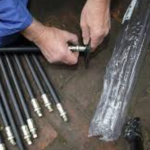Cysts are abnormal pockets of fluid that form like blisters in various parts of the body, including skin, the genitals, and the internal organs. The size of a cyst can range from a small sac to a large bag that contains litres.
A cyst can be either painful or not. A cyst can contain semi-solid material or even solid matter, depending on its cause and where it is located. Even though the majority of cysts are benign, they can be treated with surgery to remove them. A qualified healthcare professional should investigate any lumps that are unusual. For Cysts Manchester, visit Manchester Lumps Clinic who specialises in Cysts Manchester.
Cysts and their causes
The majority of cysts are not known to have a cause. However, some cysts can be caused by:
- Blockages in ducts can cause fluid to accumulate
- Cellular defects
- A blood vessel ruptured by an impact injury
- A parasite.
Skin – Two types of cysts are commonly found under the skin: epidermoid and sebaceous. Both are smooth-surfaced lumps that are usually flesh-coloured or a whitish yellow. Epidermoid cysts are formed when skin surface cells migrate deeper into the skin, multiply and then move out. These cells are the walls of the cysts and secrete a yellowish, soft substance called keratin that fills the cyst. Sebaceous cysts develop inside glands which secrete a substance known as sebum. Normal gland secretions can become trapped and form a pouch of a cheese-like substance. The back of the head, upper back, and scalp are common sites.
Wrists – The ganglion cysts appear as soft or rubbery swellings. They are usually caused by a minor injury, which causes excess joint fluids to accumulate in a sac-like structure near the joint. Also, ganglion cysts can develop on the feet or fingers.








